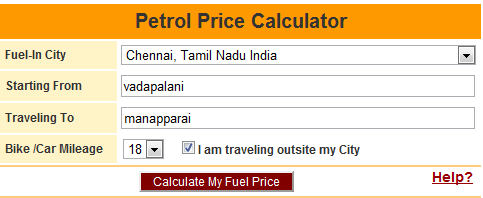Blog Archives
Britain and US real story on wars
 For more than half a century Britain’s foriegn policy has been based on remaining as closly aligned as possible to US government policy.
For more than half a century Britain’s foriegn policy has been based on remaining as closly aligned as possible to US government policy.
For this very same reason former British Prime Minister, Tony Blair, led his country into US-led wars because the US government was set on going to war.
Within hours of the September 11th, 2001 attacks on the World Trade Center and the Pentagon, which killed over 3000 people in the US, the Bush government was blaming Osama bin Laden and his alleged Al-Qaeda network.
Thus began the so-called war on terror. Immediately the Pentagon put into effect its already-prepared plans for launching massive bombing raids against Afghanistan.
It has since come to light that implementation of American plans for an oil pipeline from Turkmenistan to Pakistan was the real goal of the war on terror.
At the time, no suggestion was made that Iraq was in any way connected with the September 11th attacks. But, a year later in September 2002, the US government and its media arms launched a disinformation campaign to persuade the American people and global public opinion that it was actually Iraq, which was behind the terror attacks on the US soil.
The then British government was part of “a coalition of the willing”, declared by Bush which joined hands in the so-called war on terrorism.
This is while long before those developments the US government had been pursuing plans similar to the UK’s colonial arrangements with countries in the Middle East and Central Asian regions. In fact, the invasions of Afghanistan and Iraq were all about oil as evidenced by released documents.
Afghanistan signed a major deal with the US in 1998 to launch a long-planned, 1680km-long pipeline project expected to cost $ 8billion. If completed, the Turkmenistan-Afghanistan-Pakistan-India pipeline (TAPI) would export gas and, later, oil from the Caspian Basin to Pakistan’s coast where tankers would transport it to the west. 
The Caspian Basin located under the Central Asian states of Turkmenistan, Uzbekistan and Kazakhstan, holds an estimated 300 trillion cubic feet of gas and 100-200 billion barrels of oil. Securing the world’s last remaining known energy ‘Eldorado’ is a strategic priority of vital importance for the western powers. China can only look on with envy.
But there are only two practical ways to get gas and oil out of landlocked Central Asia to the sea: through Iran, or through Afghanistan to Pakistan. For Washington, Iran is taboo. That leaves Pakistan, but to get there, the planned pipeline must cross western Afghanistan, including the cities of Herat and Kandahar.
In 1998, the Afghan anti-Communist movement ‘Taliban’ and a western oil consortium led by the US firm UNOCAL signed a major pipeline deal. UNOCAL lavished money and attention on the Taliban, flew a senior delegation to Texas, and even hired a minor Afghan official, Hamid Karzai.
However, Osama bin Laden advised the unworldly Taliban leaders to reject the US deal and got them to accept a better offer from an Argentine consortium, Bridas. Washington was furious and, according to some accounts, threatened the Taliban with war.
In early 2001, six or seven months before 9/11, Washington made the decision to invade Afghanistan, overthrow the Taliban, and install a client regime that would build the energy pipelines. But Washington kept on sending money to the Taliban until four months before 9/11 in an effort to keep it “on the side” for possible use in a war or strikes against Iran.
The 9/11 attacks, about which the Taliban knew nothing, supplied the pretext to invade Afghanistan. The initial US operation had the legitimate objective of wiping out Osama bin Laden’s al-Qaida. But after its 300 members fled to Pakistan, the US stayed on, built bases – which just happened to be adjacent to the planned pipeline route – and installed former UNOCAL “consultant” Hamid Karzai as leader.
Washington disguised its energy geopolitics by claiming the Afghan occupation was to fight terrorism, liberate women, build schools and promote democracy and the UK blindly followed suit.
Given the post 9/11 climate, Tony Blair claimed that it was his decision to join the US-led war on terror because he believed in it.
Blair said that given the same options he would still have made the same decision.
He said: “If there was any possibility that [Saddam Hussein] could develop weapons of mass destruction, we would stop him. It was my view then and that’s my view now.”
However, no weapons of mass destruction or even a trace of them was found in Iraq.
Britain and the US invaded Iraq because they wanted to control its vast energy resources. Moreover, there were neo-conservative dreams in both countries of restructuring the Middle East with democracy. The British pro-Zionist authorities and Zionist lobbyists in the US also thought of furthering Israeli interests by removing the crestfallen former Iraqi dictator from power.
And, as the US neo-con strategist Paul Wolfowitz famously said, weapons of mass destruction were just the “one thing we could all agree on.”
Britain, since the Suez crisis of 1956, has seen its interests tied to America’s.
The British and US governments have been misusing the United Nation’s Security Council as a tool to serve their own interests. In the case of Iraq, both the imperialist states, which had launched a secret war against the country long before the March 2003 invasion, tried to justify their atrocities by claiming they had a UN mandate to police so-called “no-fly zones” which they declared following the Persian Gulf War.
The latest example of policing “no-fly zones” was in the North African country of Libya, where Britain and France drafted a resolution at the Security Council to introduce a ‘no-fly zone’ to protect the country’s civilians from being killed at the hands of its former dictator Muammar Gaddafi.
But, the UN mandate turned out to be a pre-planned plot to overthrow the regime of Gaddafi on the back of a popular uprising fuelled ny discontent inside the country.
Now that the Gaddafi regime has been toppled, Britain and other western powers unveiled bids to secure a slice of the oil prize in Libya with France saying it was “fair and logical” for preference to be given to those who first helped the revolutionaries.


